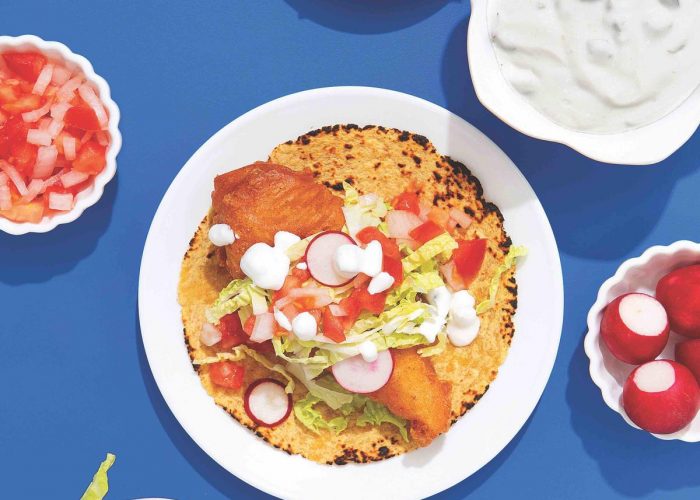All featured products are curated independently by our editors. When you buy something through our retail links, we may receive a commission.
Esteban Castillo was raised in Santa Ana, California, surrounded by palm trees and a population that is predominantly Latino. As a kid, he feasted on Mexican food prepared by his mothertangy ceviche, chicken con chochoyotes (masa dumplings), and chorizo tacosbut it wasnt until he was older that he realized many of the recipes he saw on blogs and in magazines didnt reflect the kind of Mexican food he was used to. So he launched his own blog, Chicano Eats, which served as a space to not only share authentic Mexican recipes from his childhood, but also highlight other Latino voices.
Related Reading: 6 Fried Egg Breakfast Tacos That Are Delicious for Dinner Too
Stemming from his blog, Estebans first cookbook Chicano Eats highlights traditional and fusion Mexican food. The recipes emerged from Chicano cuisine, one thats been shaped by the communities Mexican immigrants moved to in the United States, namely in California, Texas, Arizona, New Mexico, Nevada, and Colorado. As these immigrants settled in America, they brought with them their own set of techniques and ingredients to use in the kitchen (think chiles, beans, tortillas, tomatillos, and corn), but were also required to wield local ingredients from other cultures and regions in the country, thus forming their own brand of fusion cuisine.
Courtesy of Chicano Eats
In Chicano Eats, youll find 85 Chicano recipes, from mac and queso fundido to toasted coconut horchata. Esteban not only provides recipes, but he also walks readers through essential Mexican kitchen tools (and how to use them), as well as define and explain the variety of quesos, chiles, tortillas, herbs, and spices found in the book.
Related Reading: 11 of the Best Mexican Food Staples You Can Order Online
Below youll find Estebans recipe for tacos de pescado (fish tacos). The secret to making the crispiest of fried fish was handed down to him from his mother, who crushed saltine crackers into the batter. These days, Esteban also adds New Mexico chile powder, garlic, onion powder, smoked paprika, and a Mexican blonde lager to the batter, creating a dry dredge for the fish. Once the fish filets are dressed, Esteban dunks each piece into hot oil until golden brown, removing them and immediately covering each piece with salt.
To serve, slide corn tortillas under each crisped-up fish filet, followed by a showering of cabbage, radish, and pico de gallo. Daub the top with housemade jalapeño crema, then finish it off with a lemon wedge.
From the book CHICANO EATS: Recipes from My Mexican-American Kitchen by Esteban Castillo. Copyright © 2020 by Esteban Castillo. Published on June 30, 2020 by Harper Design, an imprint of HarperCollins Publishers. Reprinted by permission.
Tacos de Pescado (Fish Tacos) Recipe
I grew up in a typical Catholic home, where we observed Lent every spring. It meant we werent allowed to eat meat on Fridays, but my siblings and I didnt really mind because we loved eating seafood; we would have eaten ceviche and mojarras fritas (whole deep-fried tilapia) every day if we could have. One of the many dishes mi mamá would prepare for us during this time were tacos de pescado. Her secret for a nice, crunchy crust was to crush up saltine crackers and incorporate them into the fish batter. I still use this technique for my own fish tacos, incorporating pulverized saltines into a flavorful Ensenada-style beer batter with garlic, New Mexico chiles, onion, and smoked paprika for a fish taco topped with a briny jalapeño crema.
Header image courtesy of “Chicano Eats.”read more
One Ingredient Stands Between You and the Crispiest Fish Tacos


